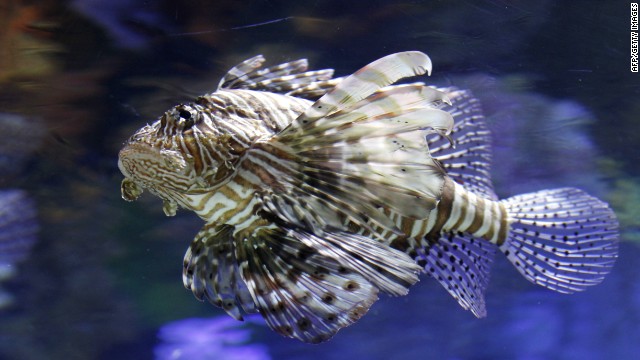 The invasive lionfish – a huge threat to tropical Atlantic and Caribbean reefs. I was in the Bahamas back in 2005 when one of the first two juveniles was captured in the country. Today, they are everywhere, putting predatory pressures on small herbivorous reef fishes that keep the algae under control on coral reefs. In fact, the increased algal cover on coral reefs can be largely attributed to the booming lionfish population.
The invasive lionfish – a huge threat to tropical Atlantic and Caribbean reefs. I was in the Bahamas back in 2005 when one of the first two juveniles was captured in the country. Today, they are everywhere, putting predatory pressures on small herbivorous reef fishes that keep the algae under control on coral reefs. In fact, the increased algal cover on coral reefs can be largely attributed to the booming lionfish population.
The problem comes with eliminating this animal. While they are not native to Atlantic waters, they are clearly right at home. They are so prevalent in fact, that locals have begun to consider them a new food source and fishery. Several conservation groups have recommended that the fish should be hunted and eradicated. This is no small task, as it requires a lot of underwater labor to seek, spear/trap, and remove the animals. This has gone so far as a recreational diver training agency offering ‘specialty courses’ in lionfish hunting.

The problem with all this is what is out of sight, is also out of mind. I have a growing data set of lionfish population counts on Bahamian mesophotic, or ‘middle-light’ (200-500 feet), reefs. While the species has been the focus of shallow research and eradication efforts, we cannot ignore their presence in the deep – and there are lots of them.
Several questions come to mind that need some answers:
1. are they reproducing down deep – is this a source?
2. have hunting/eradication efforts forced the species deeper in search of protected water?
3. are they just saturated in shallow waters, so are seeking more home turf?
This is troublesome because of our ongoing issue with accessibility to this deeper environment. VERY few researchers have access to mesophotic reefs, and even fewer local fisherman would ever consider diving to depths of 200, 300, and even 400 feet to address the problem.
This is one to keep en eye on…

